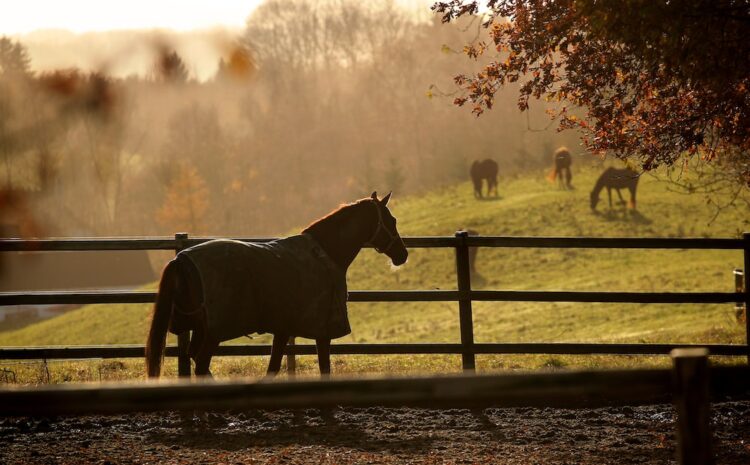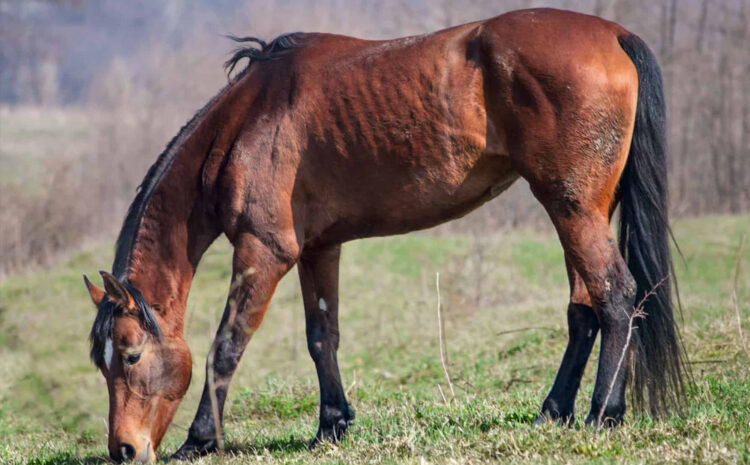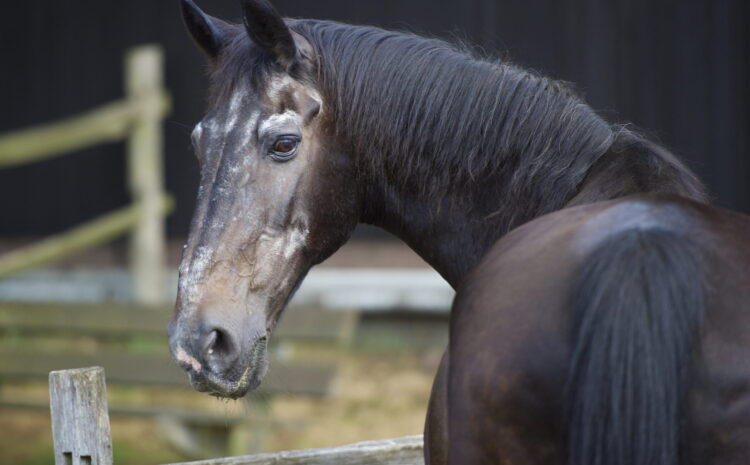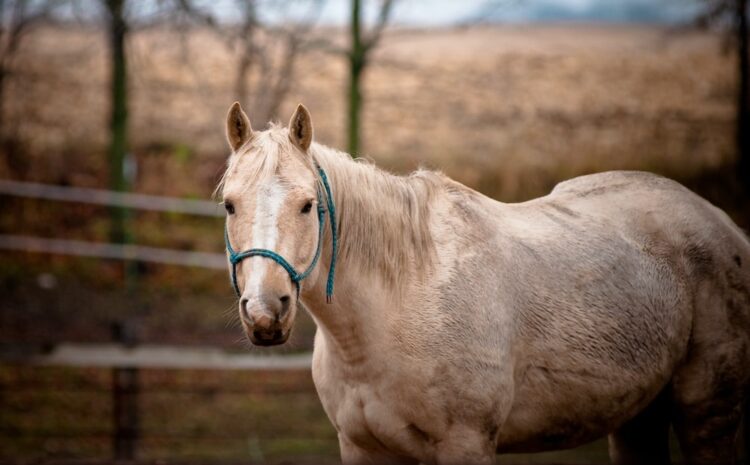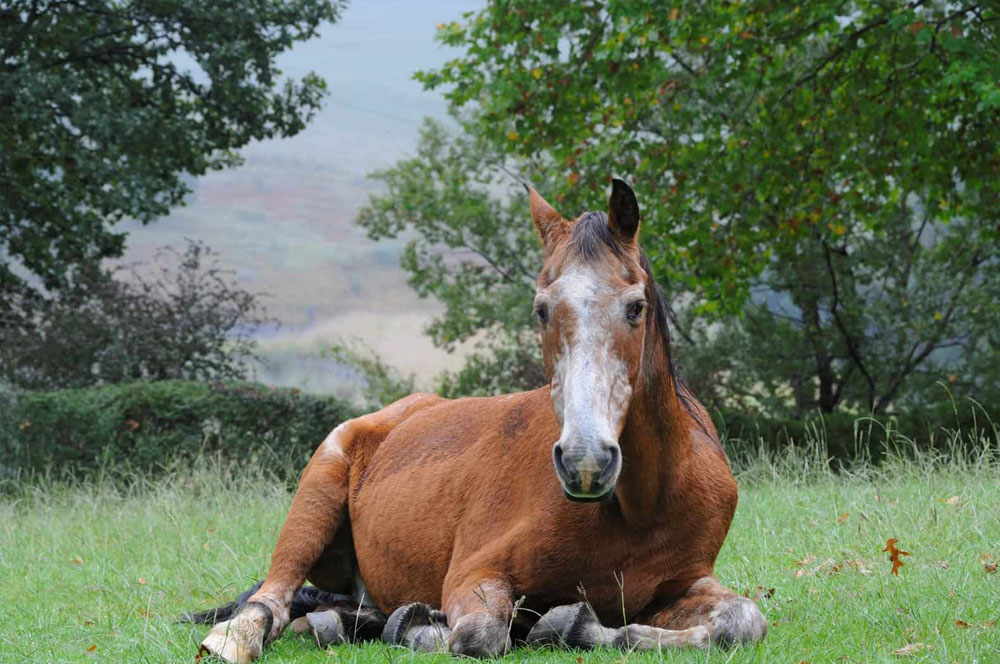EDUCATION
Kings Equestrian foundation approach for Education includes importance of curriculum development, lesson plans, capturing training progress, periodical assessment, and a structured approach in equestrian sports for kids and sportsman development is well-articulated. Here’s a summary of the key points:
Equestrian sports offer unique opportunities for skill development and a deep connection with horses. A structured approach is essential for maximizing the benefits.
CURRICULUM DEVELOPMENT
- Age-appropriate: Tailor the curriculum to the age and skill level of participants for engaging and challenging activities.
- Progressive: Design a curriculum that allows continuous development, preventing stagnation in skills.
- Holistic: Cover various aspects of horsemanship, including riding techniques, stable management, horse care, and safety.
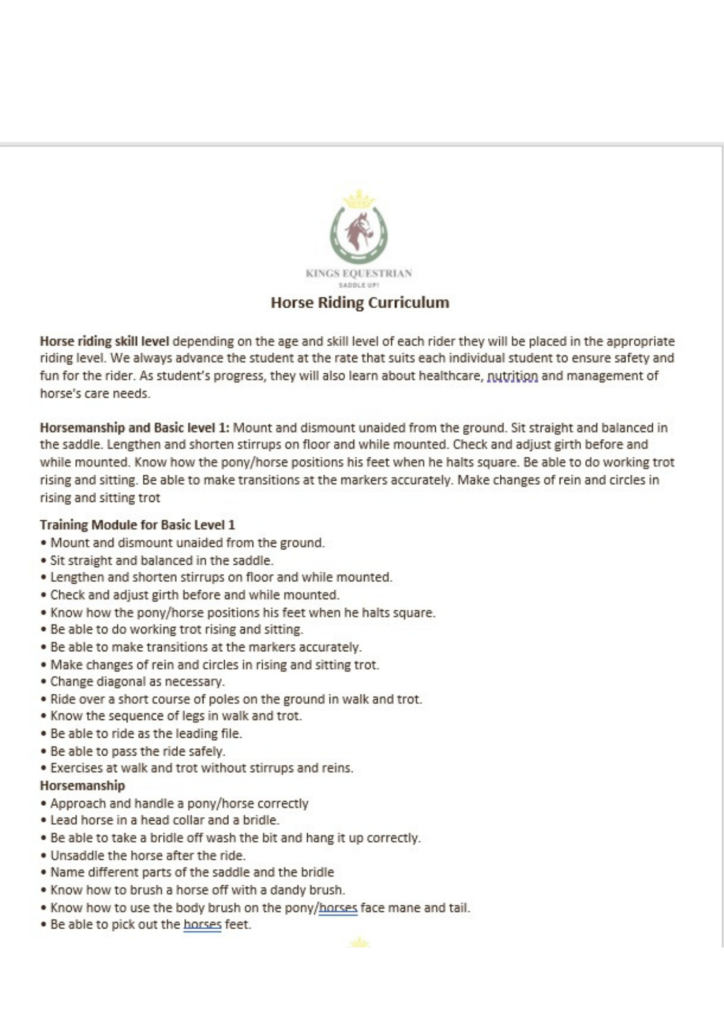
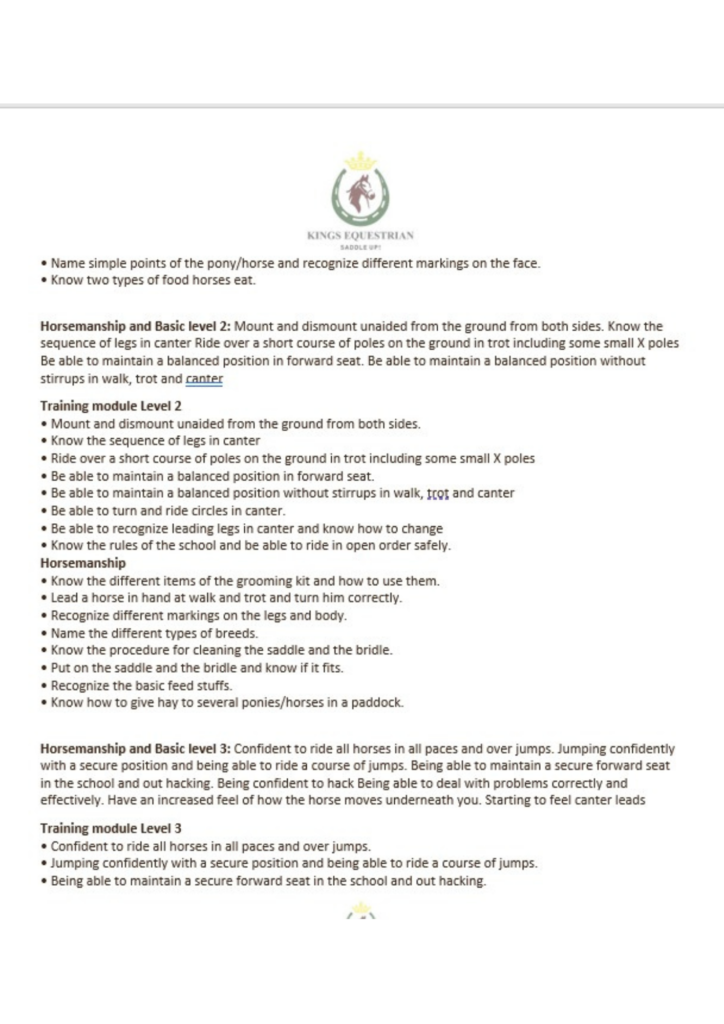
LESSON PLANS
- Detailed: Each lesson plan should have clear objectives, specific activities, and instructions for effective execution.
- Varied: Keep lesson plans diverse and engaging, incorporating different exercises and technology for enhanced learning.
- Structured: Provide a clear framework for lessons, ensuring smooth transitions and maximizing the learning experience.
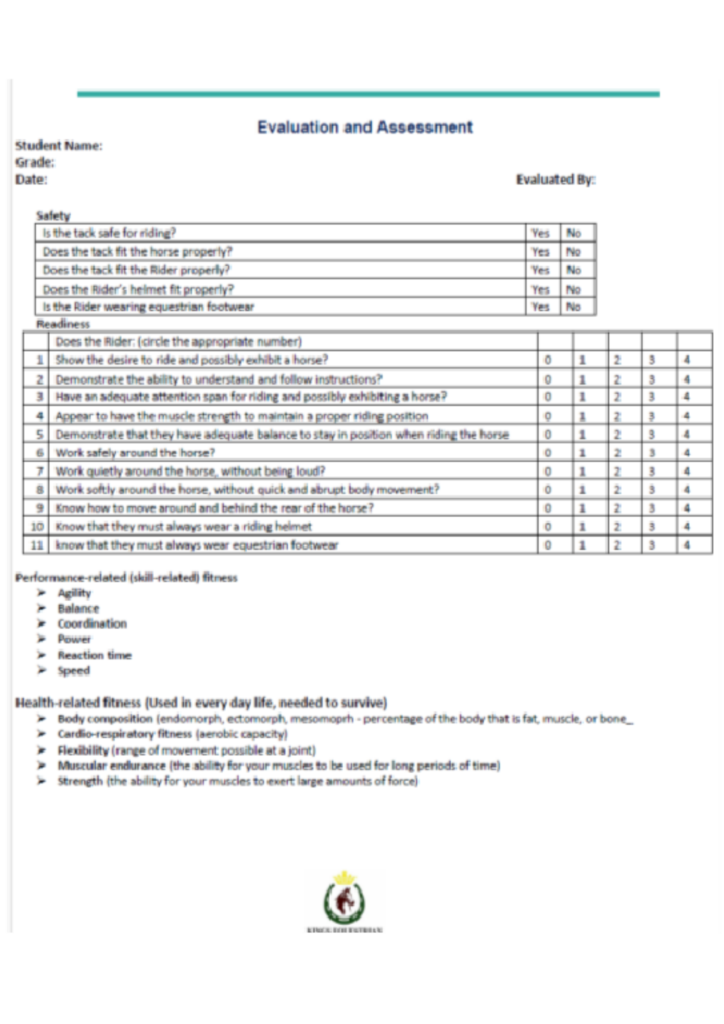
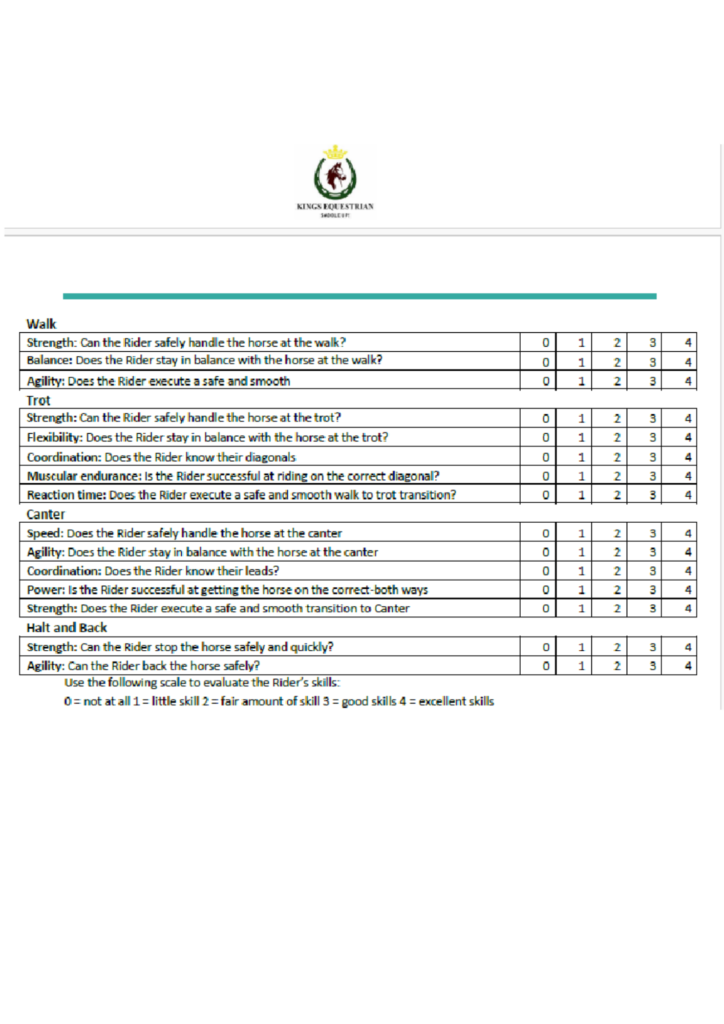
CAPTURING TRAINING PROGRESS
- Record Keeping: Maintain detailed records to track individual development, including riding skills, horse behavior, challenges, and successes.
- Self-Assessment: Encourage active participation in progress evaluation through self-assessment tools and discussions.
- Video Analysis: Utilize video recordings for insights into technique, form, and areas for improvement.
PERIODICAL ASSESSMENT
- Regular Evaluation: Conduct regular assessments, such as riding tests and competitions, to provide feedback and highlight areas needing improvement.
- Benchmarking: Compare performance to established benchmarks or standards for context and identification of improvement areas.
- Holistic Evaluation: Assess not only riding skills but also horsemanship knowledge, horse care skills, and overall sportsmanship.
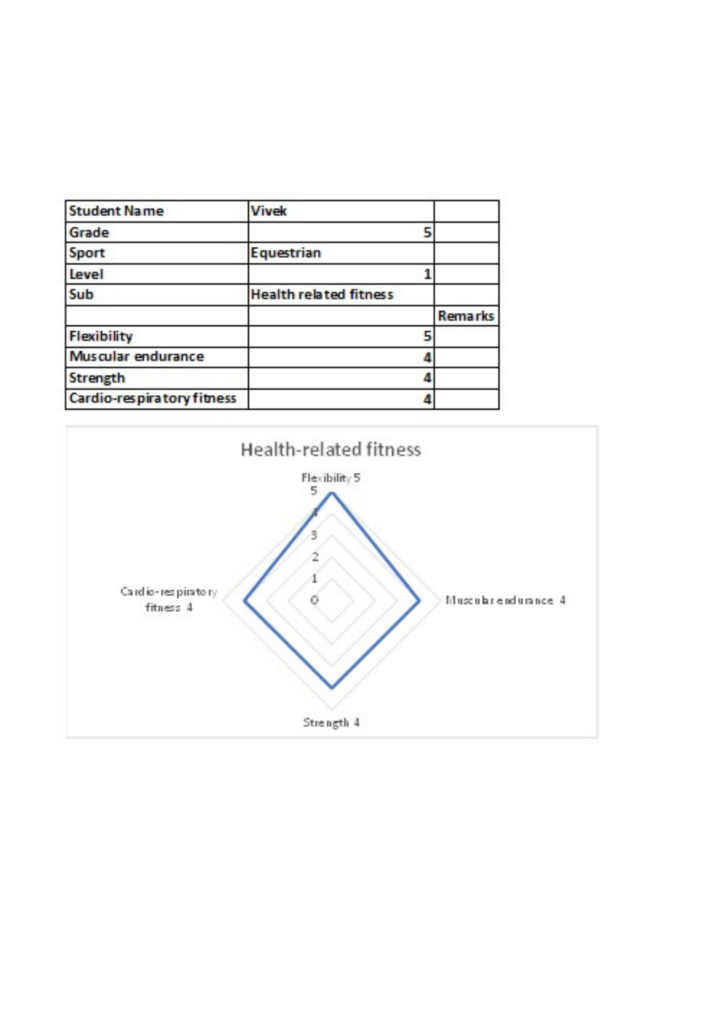
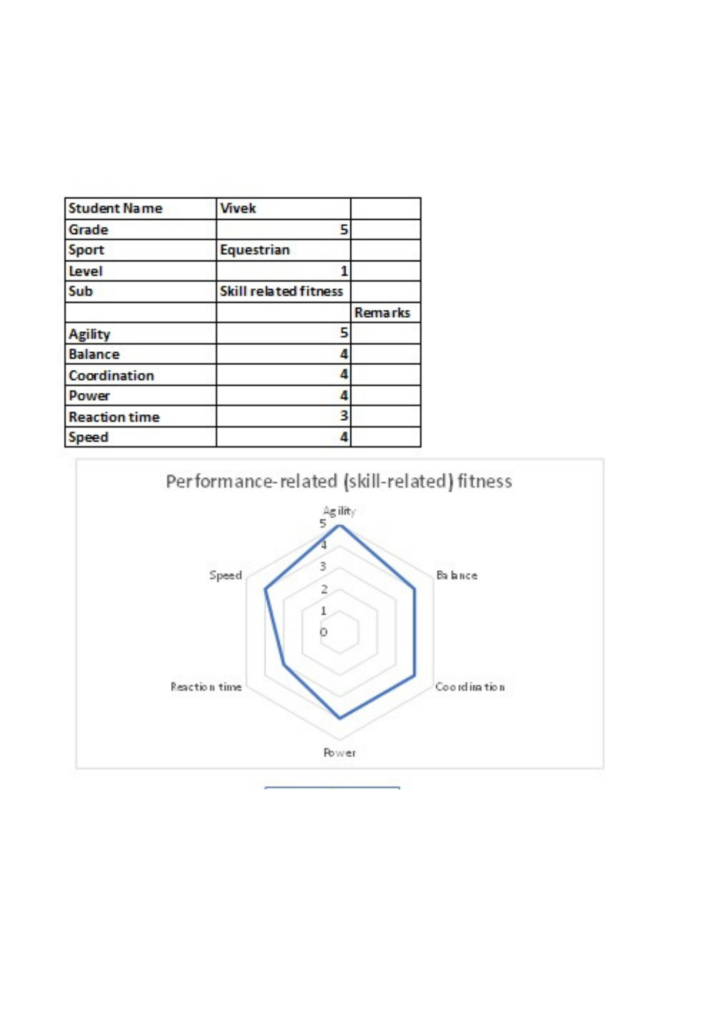
STRUCTURED APPROACH
- Consistency: Maintain a consistent training schedule and routines for muscle memory, confidence building, and achieving long-term goals.
- Discipline: Balance structure with room for exploration and creativity to foster a positive learning environment.
- Support: Provide ongoing support and encouragement through mentorship, positive reinforcement, and a supportive community.
BEMNEFITS FOR KIDS AND SPORTSMAN
- Skill Development: Essential riding skills, horsemanship knowledge, and athleticism.
- Confidence and Self-Esteem: Build confidence and a sense of accomplishment.
- Social and Emotional Development: Learn life skills like teamwork, communication, and responsibility.
- Physical Fitness: Improve fitness through riding and stable management activities.
- Stress Reduction: Enjoy therapeutic benefits, finding an outlet for relaxation and stress relief.


SUMMARY
Implementing a structured approach in equestrian sports is crucial for participants to develop skills, build confidence, and achieve their goals. The focus on curriculum development, lesson plans, progress tracking, assessments, and consistency contributes to a positive and effective learning environment.


